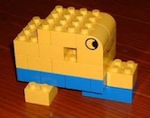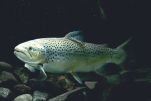Yes Fred , I’m just making SURE there are no more leaks in any way before we replace the “nose cards” ... I just have a few more little spots to fix on the ply (waves in top veneer ) and although it makes little difference at this point if it’s “perfect" , I’d just like to see how far we can fix that ply, try some different techniques. I’m sure we can work it completely flat again !
The main thing I learned from all this ,aside from COMPLETELY sealing all the little things that could possibly leak or wick water in, was we
should have treated the plywood ribs with ‘the mix’ first thing... I kinda' got in a hurry and omitted this step and naturally it came back to bite me in the ... nose ...

Also noticed that canvas should be “sized” thoroughly thru, (soaked) to
fully encapsulate the fibers, BEFORE applying a final finish ... The paint or glue alone doesn’t do all that’s needed by itself.
The more we build , the more we learn ... all for the "Greater Good” !!!
Ps. that “chipboard” worked out Great , no soaking , no warping or swelling, although it had come into contact with the wet area... Thorough sizing and finishing , did the job ...

Thinking now some chipboard , laminated into reasonable thicknesses , might replace wood around doors and windows ... It surely would hold a screw if treated right (poly/resin) ... more stuff for testing... more for learning ...

We’re anxious to “try" chipboard on another build , maybe replacing thin plywood on a roof , or hatch frame covering ... places where we can’t use foam ...

Psps. we did notice the (cheap) screws were rusted a little on the inside (threads) , so will be replacing those with SS screws . Curious , the chrome trim washers , were fine , no corrosion

... little things , that can be changed for lasting durability years from now ...









 ... little things , that can be changed for lasting durability years from now ...
... little things , that can be changed for lasting durability years from now ... 
 Tires topped off, lights checked. Everything is solid now ... I even have my little Foamie repair kit made up , just in case...
Tires topped off, lights checked. Everything is solid now ... I even have my little Foamie repair kit made up , just in case... 



 We noticed the OSB used on our “commercial” trailer
We noticed the OSB used on our “commercial” trailer  That’s what NOT to use...
That’s what NOT to use... 